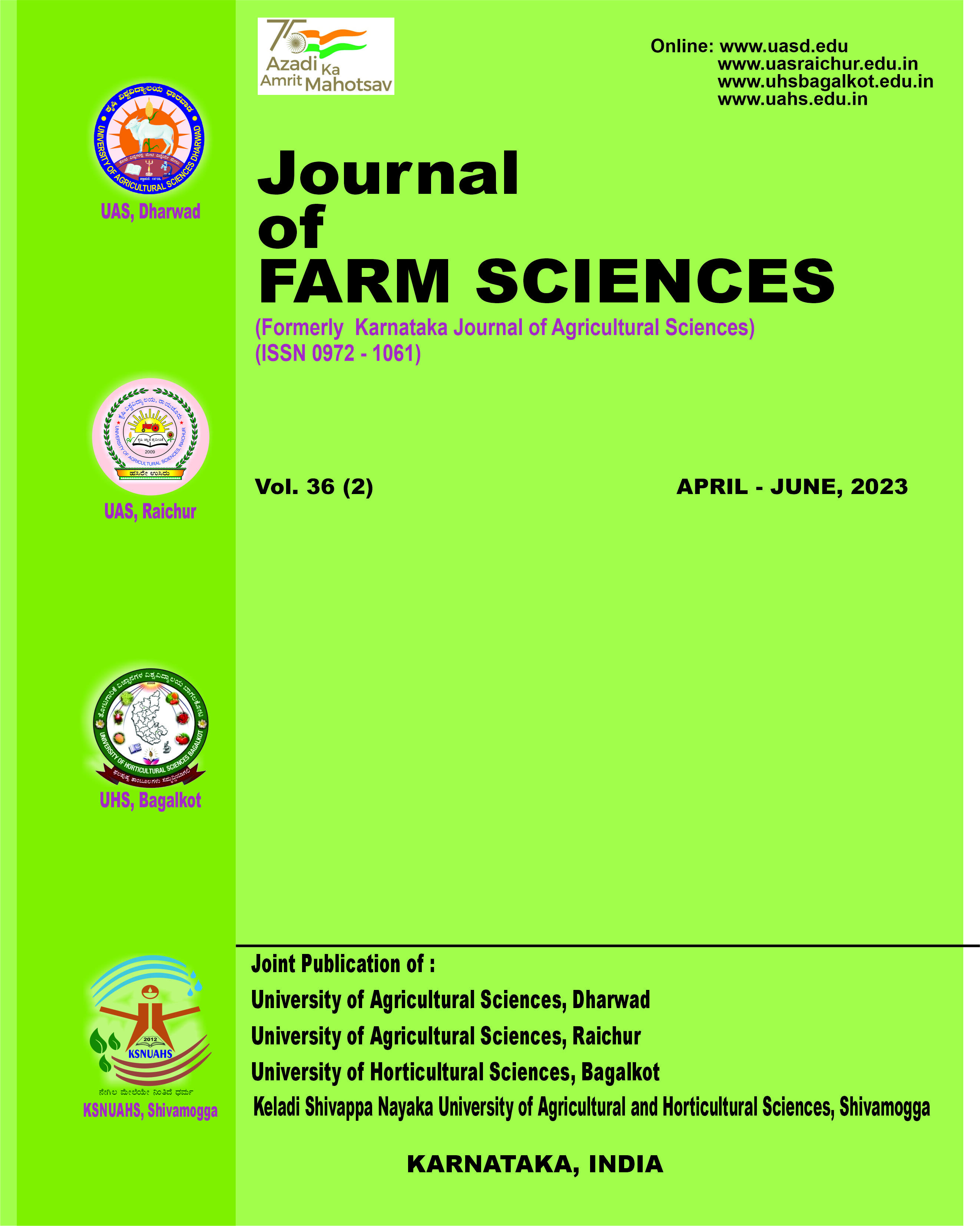Survey for severity of anthracnose disease of dolichos bean in major growing areas of Karnataka
Abstract
Dolichos bean is an important pulse-cum-vegetable crop. Karnataka only contributes about 90 per cent of both area and production of Dolichos in India. It is an important crop when considering food, nutritional and economic security for poor and marginal farmers, ecosystem stability, climate change resilience and cultural diversity for local food habits. Dolichos beans are prone to various biotic and abiotic stresses. Among several diseases affecting dolichos bean, anthracnose caused by Colletotrichum lindemuthianum (Sacc. & Magn.) is an important disease throughout the world including India. A roving survey was conducted for the severity of anthracnose in major dolichos bean-growing regions of Karnataka during the kharif and rabi seasons of 2022. Out of eight districts surveyed, Kalaburagi district had the highest mean disease incidence of 37.92 per cent. The most affected villages in this district were Madanhipparaga and Srirampura, where Ashoka and Selection-D varieties recorded a disease incidence (PDI) of 51.1 and 40.0 per cent, respectively at pod setting stage. Keribosga and Bhimalli villages, where the Riya (D-14) variety was grown at the flowering stage had lower PDI of 33.3 and 27.3 per cent, respectively. In the Dharwad district, Malligwad and Garaga villages had moderate PDI of 38.8 and 30.0 per cent, respectively on the HA-4 variety at the pod setting stage. In contrast, the Bidar and Chikkamagaluru districts had the minimum mean disease incidence of 9.4 per cent on VNR and HA-4 varieties at the flowering stage, respectively.


